Click to view our Accessibility Statement or contact us with accessibility-related questions


















Audio Myths... A mostly civilized discussion

search
close
Sort by: Newest
keyboard_arrow_downBowRat
0
Oct 26, 2022
I thought the point in burn-in was similar to a high-end ICE's pistons and cylinder walls. If that were the reason, the tolerances of a piston and rings moving in a cylinder are much higher (than a driver's coil and magnet. The process of re-foaming the surround on a traditional driver would be far more complex, and not something that could be accomplished by the average person, especially with drivers that are designed with a large (longer) range of travel. Misalign the surround just a bit and replacing driver the can seem like a more viable option.
Bottom line, there are other components in the driver that will slowly adjust over time, the surrounds and the cone, especially with all the different types of driver and surround materials. And the above only takes into account the driver itself. The physics of heat and changes in a completed speaker's crossover design and the physical parameters involved and various components' of the crossover seem more prone to the rigors of a proper burn, speakers sold as matched pairs, and not just for matching wood veneers. There might be something to it, or maybe not.

albertofgomez
25
Jun 30, 2022
If it was real, and the evidence exists, (other than anecdotal evidence) we would not be having this discussion don't you think? I believe more the theory that the human ear get used to the new sound...if you ear a headphone for the first time, let it burn in for a week, and liste to it again, I doubt you will notice any difference, human perception is really bad on overtime comparisons, specially hearing...and you can hear two things at once either...
(Edited)

sovebss
22
Jun 12, 2022
Burnin is real I have proof when I first started this guy burned in my moon drop SSP and after a week I went to listen to them again and they were blown out so yeah there’s your proof now I know to leave it at F Way not 100% volume for a whole week
AnotherVoice
115
Jan 3, 2022
Most myths are myths because the effect is either extremely subtle or easily induced by a person's state of mind. If it were obvious, there wouldn't be any controversy. Makes me wonder why we put so much importance on the nearly imperceptible.

Coderr
11
Jun 7, 2021
I think our perception of subtleties is colored by our expectations, and mood. Whether we are tired, hungry, etc. all play into it. So if you checked something out, and did not like it, and then upon retest you did, maybe you are simply in a better mood for the 2nd test. :-)
Double-blind tests of various items often surprise the testers and the test subjects, in how poorly the subjects tend to do picking out the "high end" items. We perceive what we want to perceive to a large degree. If somebody is a firm believer in "break in" the results tend to turn into a self-fulfilling prophecy. People get all passionate and often speak about audio in poetical terms. E.g.: "harsh" vs "smooth". I am not sure how to translate any of that into something meaningful much less measurable. Whenever I hear these emotionally charged assessments, I always wonder if the reviewer could actually tell the difference in a blind test. I am probably upsetting some folks by saying this, but the limited testing I have done says more no than yes.
Whenever I hear emotionally charged assessments, I say to myself "ah, another case of overactive imagination". Some of it is also dissonance reduction. Someone, who just spent several thousand $$ on something esoteric, will of course want to perceive that it was worth it. Which it probably was not, for the sober, unvested observer. Nobody wants to feel like a fool. Then there is the need for self-validation, to feel superior to those unwashed masses who do not know or appreciate these things... With nothing else truly worth-while to focus on, these narcissistic, obsessive pathologies emerge.
Along the lines of the above musings, I actually gave up spending a lot of money for audio items. I found myself to be continually unhappy with my moderately high-end items, in my case "for the money I spent this should be a lot better". Vs. "Oh, for the money, it is surprisingly good". I guess if I spent a lot more, I would have no choice but feeling elated... I can just focus on enjoying the music, instead of stressing over whether I got the right DAC, preamp, whatever.
BowRat
0
Oct 26, 2022
That is not a myth. If that were a myth, then toss out the fact that every material vibrates and resonates at a different frequency. The fretboard, headstock and body of a guitar will all play an integral role in how a guitar "sounds". Can you instantly recognize the sound of a steel bodied guitar? I hope so. I will accept the differences in the various words used are much harder to distinguish, and differences become harder for the "human" ear to discern without test equipment. There's not an instrument, electronic component, speaker or even the design of a venue that doesn't rely on the of anechoic chamber (an-echoic meaning non-reflective - to stop sound and RF frequencies from a sounds contamination or color. There's a reason that you can buy a nice-sounding Ibanez for $250 and a different sounding Martin or Taylor guitar for $2,000-$20,000. Trust me, I'm not saying I can tell the difference.

Timobkg
39
Oct 27, 2022
BowRat> Can you instantly recognize the sound of a steel bodied guitar?
No, I can't. I'm not sure I've ever heard a steel bodied guitar.
There's a definite difference between a $250 Ibanez and a $2,000+ Martin or Taylor. For one, the Ibanez is electric while the Martin and Taylor are acoustic. But there's a difference even between a $250 Ibanez and a $1000 Ibanez - the $1000 Ibanez will have better parts, better fit and finish, better quality control. It will likely be easier to play, and will likely sound better due to better pickups and electronics. But if you take the pickups and electronics out of the $1000 Ibanez and put them into the $250 Ibanez, the $250 Ibanez will sound the same. The pickups in the guitar don't know what wood they're screwed into, and they don't care.
If tone woods impacted sound as much as marketing would lead you to believe, then people would be able to tell the difference between an acoustic guitar made of one wood and another, but in blind tests they have repeatedly found that people can't tell the difference.
Here's a writeup of a study where 52 musicians were given acoustic guitars made of different woods by the same luthier and asked to rate them on a scale of 1-5 without being able to see what the guitars were made of: https://www.snexplores.org/article/analyze-do-exotic-woods-make-better-guitars The scores were averaged, and the biggest difference in rating between any two woods was 0.2/5, with most falling within 0.1/5.
praxis22
26
Apr 22, 2021
They finally gave you a job then :)
I don't burn my stuff in, but I have notice things change over time.
Gramblor
83
Apr 21, 2021
Burn in may be true to some extent, but I have never listened to a headphone out of the box that I didn't like, that later somehow turned into a headphone I did like.
(Edited)
Logistics
13
Apr 21, 2021
Perhaps, some of this is the result of Users acquiring a pair of electret headphones, which over long periods of no use begin to lose their charge and will initially sound bad, but come back with use. I had this happen to me, when I bought a pair of MBQuart K800C's. They were very disappointing, when I first hooked them up. The highs were nil with overwhelming bass. But after a bit it all came back, and they sound musical again. The previous owner said they had been sitting unused for a very long time.

Kerry_Maxwell
163
Apr 21, 2021
I just find it fascinating that people insist they hear a difference over time, and immediately suspect the hardware, instead of the lump of fat between their ears.
Showing 14 of 248
PRODUCTS YOU MAY LIKE
Trending Posts in Audiophile
itsamepe
Sennheiser PC37X randomly goes bad after disconnecting the cable ?
Greetings, Yesterday I was using my headset like normal with my macbook, just listening to music and on a call with people like usual, and the headset was perfectly fine. The stock wire that came with the headset is extremely long and yesterday it annoyed me very much that it kept getting tangled with itself, so I decided to see if the cable is replaceable. I pulled out the cable from the headset and saw the adapter, and looked online for a replacement. Upon plugging it back in, the audio sounded extremely muffled and washed out. Im not sure what I did wrong to make it mess up like that as I've always taken good care of it, ive had it for about 2 years and its always just been chilling on my desk, but anywho I thought the cable just went bad and ordered a replacement. The replacement came, and the issue is still persistant, so I am not sure what the issue is I've tried multiple different headsets and the issue is not with the port, and I also tried it with my windows laptop and...
Apr 23, 2024

MrChiSox
Big changes coming to my tiny little music room, I've recently purchased a new stack. Currently figuring out where to locate it all and ordering up the necessary cables, it won't be too long before I'm up and running. I am now the proud owner of a brand new stack. It's a European brand called Earmen. Amp, DAC, Streamer & Linear Power Supply. It won't be long!
https://www.youtube.com/watch?v=MB15yM4UptQ
Apr 23, 2024

Briankan
Recommendation for my next headphone set? I have Koss 95x
Hey all, What would you recommend I get next and why? I have Koss ESP-95x electrostatic massdrop headphones. These are my first and only audiophile set. I love them. I think my only real requirements is $500 or less for the headphones and that they have a little more low end. I don’t need thump but these are really light on lows…but the experience is still awesome. Also any recommendations on an amp? I only have my electrostatic thingy. I am using the Topping D50 DAC. thx!!
Apr 22, 2024

Simthaniel
Rigs
Modded headphones with qudelix at the core
When I received the Qudelix 5K, I had already modified a pair of Superlux HD-681 headphones. I previously soldered my own balanced connections to the drivers, providing multiple ways to connect and...
Apr 14, 2024

brothamike
A decent set of IEMs
I am in the midst of a 300 hour burn-in but, I will say I am enjoying how this set sounds so far. Before I received these which was btw late by a few weeks, I purchased a Sony/Kimber Kable MMCX...
Apr 12, 2024
merrick97
Should I exchange the PC38X for better headphones?
I bought the PC38X headphones FOR GAMING and they are great, but I have NO use for a Microphone since I don't do competitive gaming and I was wondering if there were better headphone options at a similar price without a headphone, where (presumably) more of the cost was put into making it sound better. I also find that my PC38X don't get quite as loud as I would like and I was wondering if a cheap amp like the iFi Go link would draw a little more volume out of my phones. https://www.amazon.com/dp/B0BN6MM822?psc=1&ref=ppx_yo2ov_dt_b_product_details I went with the PC38X since it was considered the best bang for buck headphones. I care most about using spatial apps like DOlby Atmos and DTS Headphone:X. Suggestions are welcome.
Apr 11, 2024

LostnAmerica
Sound Signature of the Grell Project.
Wondering what type of sound signature the Drop Grell project headphones will have or trying to attain. Any update would be appreciated.
Apr 8, 2024

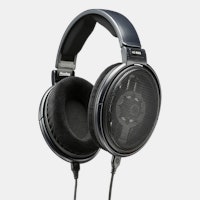
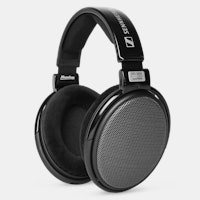

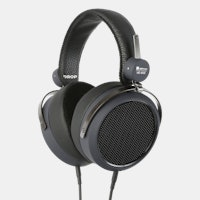
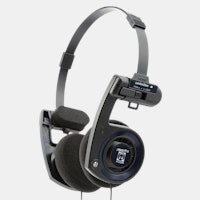

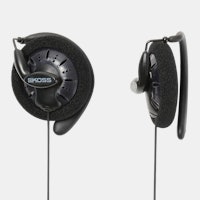
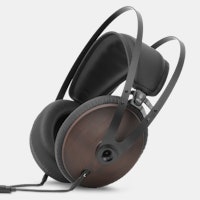
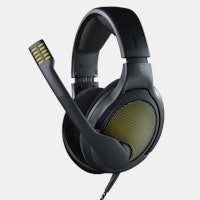
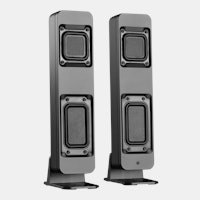
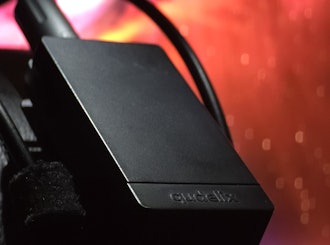
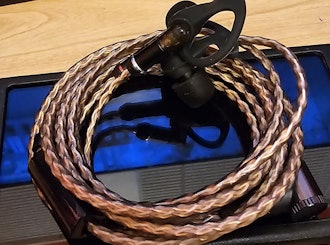
Many myths have existed for many years and while I am sure heated debate will arise I want to ask everyone to respect the rules of these forums. Act civilized. State your point of view, be open to other peoples point of view and hopefully we can at least UNDERSTAND where people are coming from and not just arguing for the sheer joy of it.
I guess I will start.
HEADPHONE and SPEAKER BURN-IN
A topic that comes up for me pretty often and yes.. I do think something happens when you take a BRAND NEW off the assembly line moving driver dynamic speaker with suspensions and surrounds and webbing and run it for X hours. Now I am not saying you have to do this. It may not even benefit you or if there is a change it might be so small it isn't worth even thinking about. But Physics dictates if a precision device has a job of moving hundredths of a millimeter then I expect if it gets used initially then the moving fabric, foam and rubber parts may stretch and wear and perform differently then bone dry stock parts that have never moved before.
So can it be real? I say yes. Can it be measured. It should be possible. Is it worth fighting over? Of course not. Many people attribute the change you "hear" during burn-in to the human ear simply adapting to the sound. Like listening to a tone for long enough that it disappears. But my usual advice is .. "If you like it out of the box, enjoy" I usually just put headphone and speakers I dislike though the hours of hard running, away from my ears and then assess later.
I will let you guys take over the next topic, Tone Arms, Headphone Cables, Interconnects, Cable Risers, Tubes..